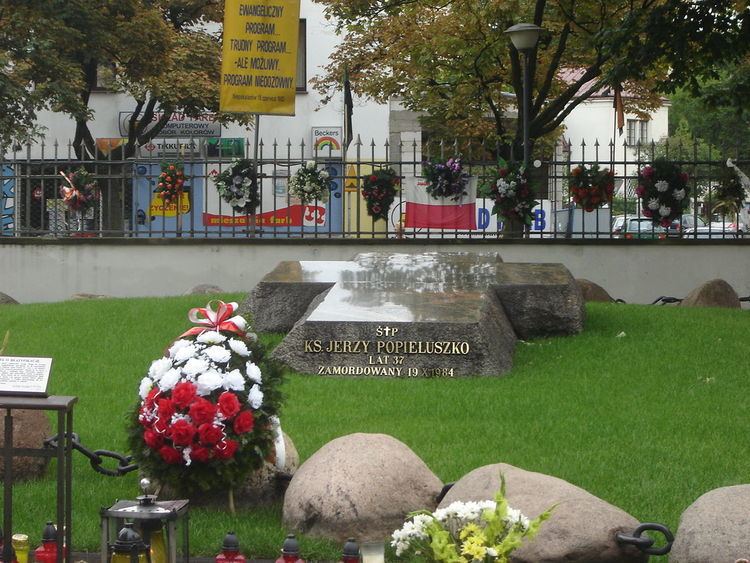Area code(s) +48 22 Population 48,443 (2008) | Time zone CET (UTC+1) Area 8.5 km² | |
 | ||
Notable landmarks ListSt. Stanislaus Kostka Church (Warsaw)Warsaw Citadel | ||
Żoliborz ([ʐɔˈlʲibɔʂ]) is one of the northern districts of the city of Warsaw. It is located directly to the north of the City Centre, on the left bank of the Vistula river. It has approximately 50,000 inhabitants and is one of the smallest boroughs of Warsaw.
Contents
- Map of C5BBoliborz Warsaw Poland
- Famous people born in oliborz
- Historical and Notable Sights
- References
Map of %C5%BBoliborz, Warsaw, Poland
In the 18th century the area belonged to the Piarists of a monastery in the nearby city of Warsaw. The monks started to parcel the grounds and allowed for the creation of various settlements on their fields, which were parceled between several villages. One of them was named Joli Bord (Beautiful Embankment in French, which was later transcribed to Polish language as Żoliborz). After 1831 the area was confiscated by Russian authorities, who erected the Warsaw Citadel there. The area was mostly unpopulated and even after the ban on construction of brick-made houses was lifted, it retained much of its rural character.
After Poland regained its independence in 1918, the city of Warsaw started to grow rapidly and new areas were needed. In the 1920s the area of Żoliborz was converted into a borough of Warsaw and the construction of new houses started. Until the late 1930s part of today's Żoliborz was built-up with houses notable for their modernist architecture. Open areas, parks and squares built there are regarded as fine examples of good urbanist architecture. Also, a so-called Żoliborz Oficerski (Officers' Żoliborz) was built up with villas for the officers of the Polish Army and other notable people of the epoch. Several star-shaped squares were built along the main axis of the borough, with the Plac Wilsona as the borough's centre and main transport hub.
During the Warsaw Uprising one of the first struggles took part in Żoliborz. After the Polish soldiers were defeated by the Germans, Żoliborz was spared the fate of the rest of Warsaw and survived the war to a higher degree than other areas.
The district has traditionally been where the intelligentsia live. The names of its estates: Żoliborz Dziennikarski (Journalists’ Żoliborz), Żoliborz Oficerski (Officers' Żoliborz), Żoliborz Urzędniczy (Clerks’ Żoliborz) are derived from the former inhabitants professions.
Żoliborz has a lot of beautiful architecture: charming old villas and colonies - properties built in the 1930s by the socialist Warsaw Housing Cooperative (WSM), which used to have common laundries, kindergartens and dining-rooms.
The main site of interest in Żoliborz is St. Stanislaus Kostka Church with the tomb of blessed Jerzy Popiełuszko, which during the last 30 years has been visited by approximately 20,000,000 people (among them John Paul II).
